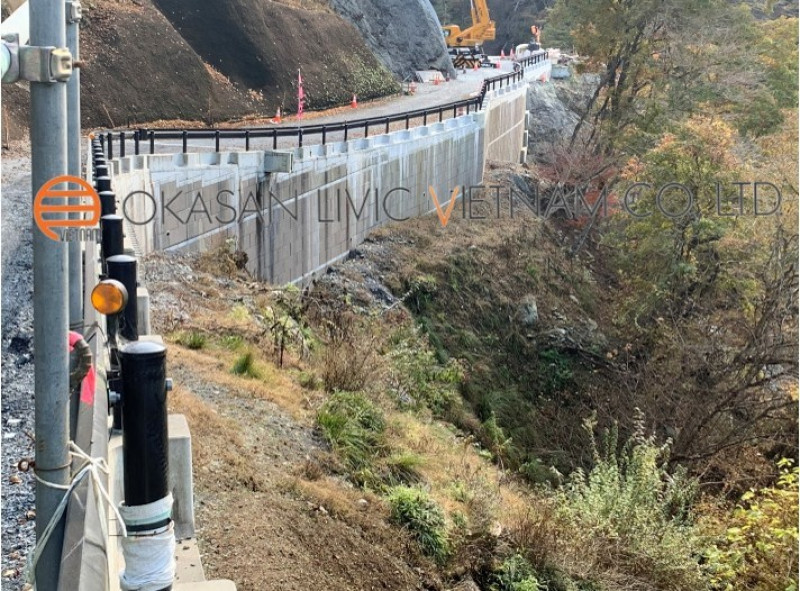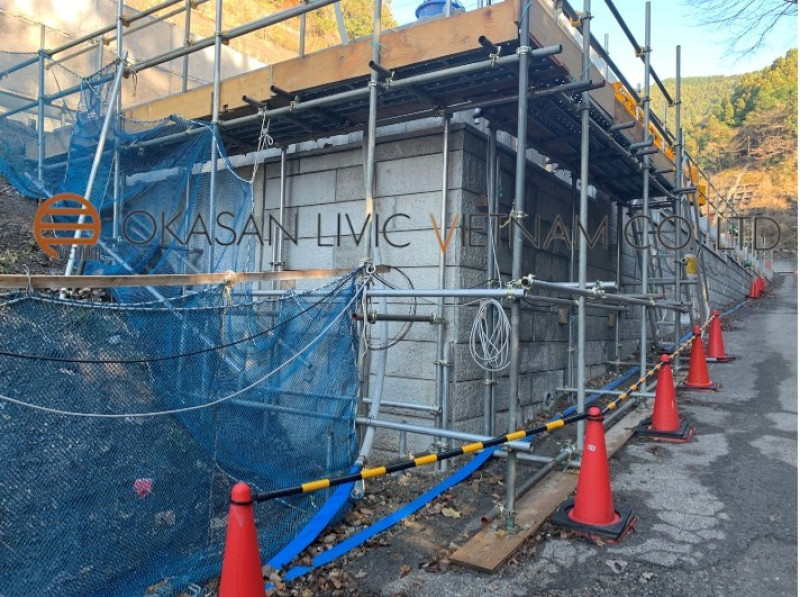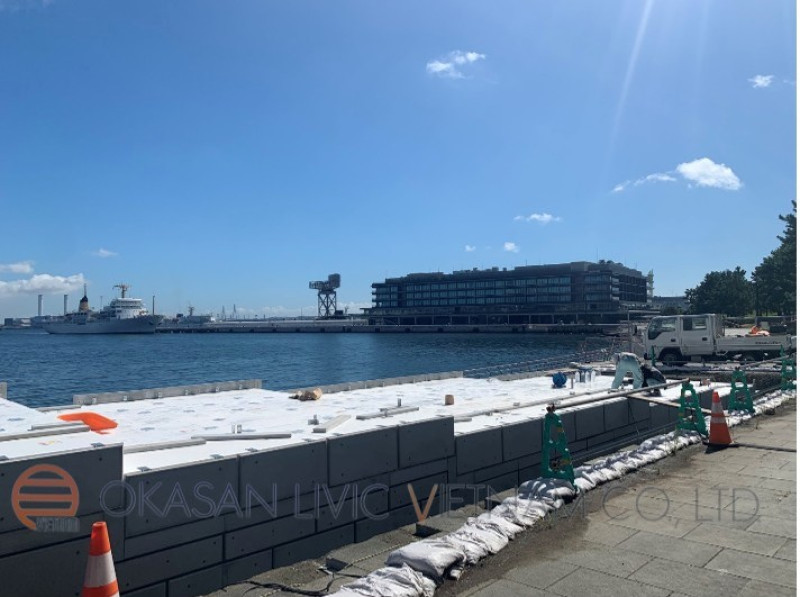EPS in Bridge and Road Construction
EPS in Bridge and Road Construction: An Efficient and Advanced Solution
1. What is EPS?
EPS (Expanded Polystyrene) is a type of lightweight foam plastic made from polystyrene through an expansion process with small gas-filled beads. EPS is widely used across various industries, especially in infrastructure construction for bridges and roads, due to its superior properties such as lightweight, excellent thermal insulation, and high flexibility.
2. Applications of EPS in Bridge and Road Construction.
EPS has become an optimal solution in the construction and repair of bridges and roads thanks to its outstanding benefits:
- Weight Reduction: Compared to traditional materials like concrete or embankment soil, EPS is significantly lighter (about 1% of the weight of soil). This helps reduce the load on the foundation and limits soil settlement.
 The replacement of EPS for the bridge abutments connecting to Rinko Park in Kanagawa Prefecture, Japan.
The replacement of EPS for the bridge abutments connecting to Rinko Park in Kanagawa Prefecture, Japan.
- Load-Bearing Capacity: Despite being lightweight, EPS has good compressive strength, making it suitable for use as embankment material in the construction of highways, tunnels, and bridges.
 Constructing a temporary road for machinery transport across the subway tracks at Miyazakidai Station on the Nishimatsu-Denentoshi Line in Japan.
Constructing a temporary road for machinery transport across the subway tracks at Miyazakidai Station on the Nishimatsu-Denentoshi Line in Japan.
- Good Water Resistance: EPS does not absorb water, which helps prevent erosion or damage when exposed to damp environments and ensures long-term durability.
 Constructing a pedestrian walkway along the river at Minato Mirai Port in Japan.
Constructing a pedestrian walkway along the river at Minato Mirai Port in Japan.
- Ease of Installation: EPS can be easily cut, shaped, and installed on-site, which helps reduce construction time and labor costs.

Disaster recovery for the KUNO forest road in Kotobukicho, Nanao, Ishikawa, Japan.
- Environmentally Friendly: EPS can be recycled and has a lower environmental impact compared to traditional materials.
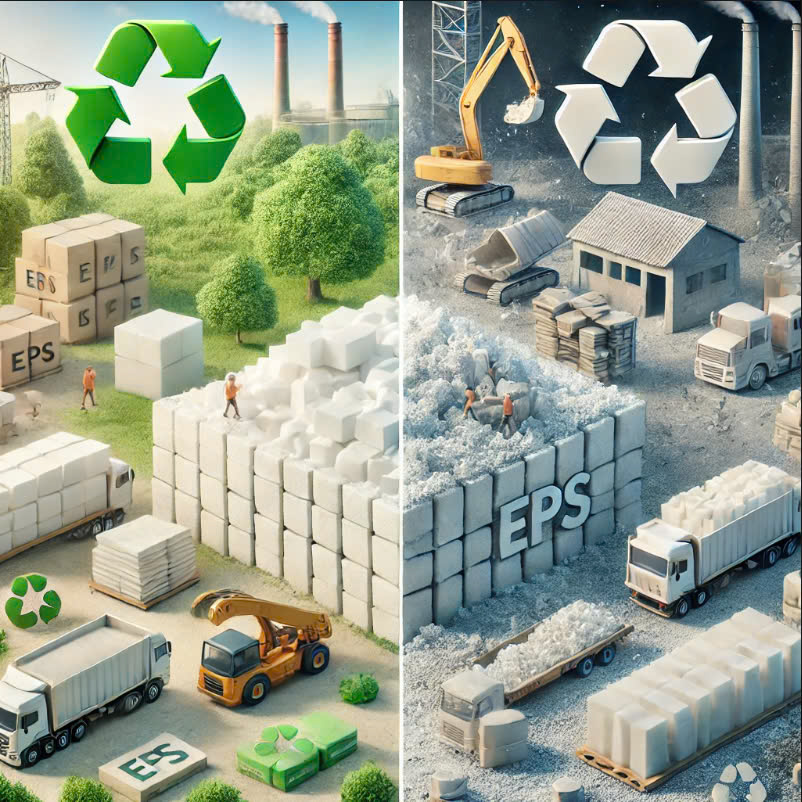
3. Specific Examples of Using EPS in Bridge and Road Construction.
A typical example of EPS application is in highway and overpass projects.
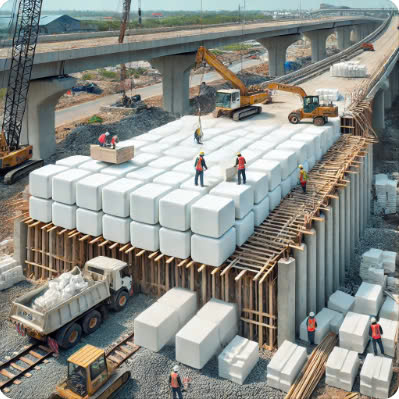
Đặc biệt trong các khu vực có nền đất yếu. EPS giúp giảm áp lực lên nền đất, ngăn chặn hiện tượng lún và cải thiện độ ổn định của công trình.

In renovation projects.

EPS is also used to replace weak soil foundations or bulky components, providing significant efficiency during construction.

4. Economic and Technical Benefits.
- Cost Savings: Due to its lightweight and flexibility, EPS minimizes transportation, installation, and maintenance costs.
- Faster Construction Time: By reducing construction time, projects can be completed more quickly, especially in cases where rapid completion is needed to minimize traffic disruption.
- High Efficiency in Harsh Conditions: EPS performs well even in extreme environments, ranging from high temperatures to wet conditions.
5. Conclusion:
With its outstanding advantages in weight, load-bearing capacity, and sustainability, EPS is becoming an effective and advanced solution in the bridge and road construction industry. The use of EPS not only enhances economic efficiency but also contributes to the development of sustainable and environmentally friendly infrastructure.
Below is a video illustrating the use of EPS blocks in bridge and road construction. The footage demonstrates how EPS is widely and commonly used in developed countries.
OKASAN LIVIC VIETNAM CO., LTD offers EPS material solutions for bridge and road construction: An effective and advanced solution from Japan.
All content above is the property of OKASAN LIVIC VIETNAM CO., LTD. Any unauthorized copying or use constitutes a violation of the law.
OKASAN LIVIC VIETNAM CO., LTD.
BÙI THẾ PHƯƠNG
Tel: 0979080510
4F, B&L Tower 119-121 Ung Van Khiem, Ward 25, Binh Thanh Dist. HCMC.


 vi
vi
